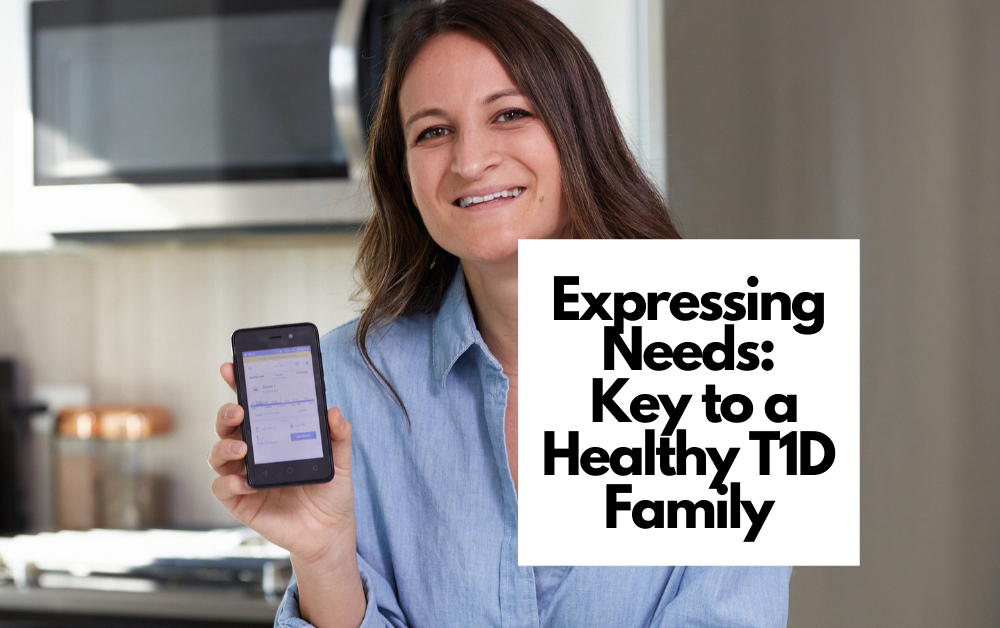Beep beep beep / buzz buzz. We know them well: the many different alarms from a CGM or insulin pump. We learn to understand them as a language, communicating important information to us all day and all night.
Alarms aside, though. There is another very important language to learn: healthy communication between a child with type 1 diabetes and their caregiver. Do you feel like you are constantly trying to decipher if your child’s emotions are from their current blood sugar, their personal relationship with diabetes, or just the fact that they’re human?
From lashing out to getting quiet, children have their own alert system when diabetes is impacting them. The key for you as a caregiver is being able to unlock what it all means… which isn’t easy. You won’t find an instruction manual to go along with your child’s moods and behaviors (but you know that already!).
We have worked with people of all ages and diagnosis stories and we see common threads. One of them is the feeling of not knowing how to communicate their T1D-related needs. Many of our clients say they don’t want to burden their relationships by always talking about their diabetes, yet they also shared that they DO want their loved ones to know that T1D is a 24/7 job.
With that in mind, one of the best things you can do to support your child now, and to prepare them as they grow up, is to help them feel comfortable opening up about diabetes. You’ll likely learn a lot, too!
So, how can you empower your child to express their needs more effectively?
Here are a few of our favorite places to start. Can you find small moments throughout the day to integrate a few of them into your routine?
Children: putting feelings into words
- Help your child start to make associations about their feelings by connecting their behaviors to their numbers.
“It looks like your blood sugar is high. You’re having a hard time sitting still. How do you feel?”
- If your child is afraid of CGM or pump insertions, help them identify what you can do to make it easier. It may be as simple as being able to peel off the adhesives themselves.
“What would make this scary task a little less scary?”
- You are doing a lot of the heavy lifting of managing diabetes right now, yet it’s still your child’s body. A great way to help them maintain that ownership is by explaining your actions.
“Last time we went to the park, you got a little low, which is why we are going to lower your basal now.”
- When your child is too upset to articulate clearly, this list of feelings on the Non-Violent Communication website is a great tool to help them express themselves. You can put it on your fridge and ask them to point to the word that best describes what they are feeling.
Teenagers: putting feelings into action
- Model for your teenager what it looks like to express your emotions and needs effectively.
“When you go to a sleepover and forget to let me know your blood sugar before bed, I feel worried. It’s helpful for me when you just send me that text to put my mind at ease.”
- Find gentle ways to remind them of their patterns while positioning them as the expert.
“When we’ve had pizza in the past, your blood sugar spiked in the middle of the night. What do you think would prevent that, so you can really enjoy this pizza?”
- Remember how you felt as a teenager, craving for independence? Sometimes, try to offer your child space to express how they feel without providing any immediate solutions. Just having someone listen can have a big impact.
- Invite your teenager to regularly review what is working for them and what isn’t. This will help them feel like they are not stuck with their T1D, remind them that they are supported, and build a habit of reflection.
Implementing these communication techniques with your child will help you have more productive conversations and eliminate some of the guesswork about what and how they are feeling. The more comfortable they are at a young age identifying and expressing their T1D needs, the more confident they will be as they mature. Then, asking for help and embracing their independence will come more naturally to both of you.
If you are looking for more guidance as a caregiver of a T1D, be sure to check out our free video: The T1D Family Experience. In it, founder and diabetes health coach Lauren Bongiorno will give you great tips you can start using right now to help your whole family get on the best path forward.

Be the first to comment